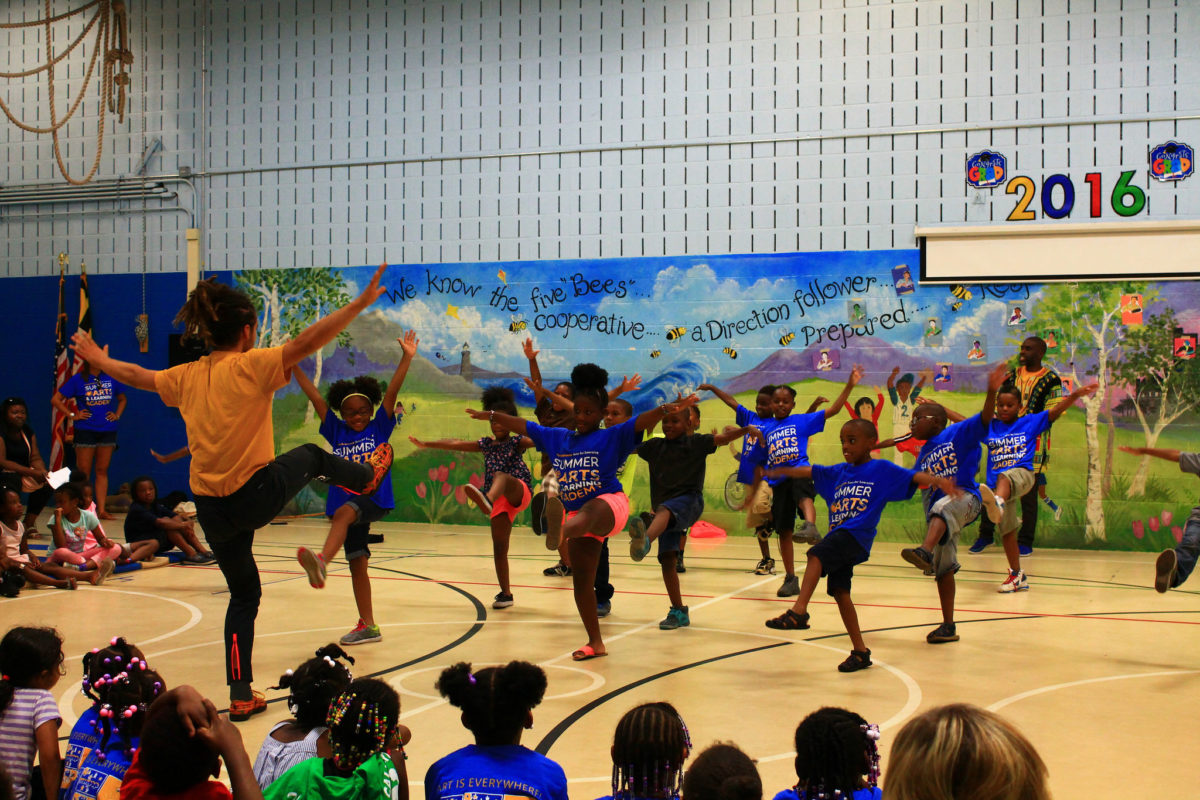At Young Audiences’ version of summer school, more than 800 Baltimore city elementary school students learned about fractions with music and built their vocabulary through dance. In the arts integration program, which expanded to four sites in 2016, teachers and artists pair up to teach concepts around literacy and math from a different perspective.
“We want it to be different than what they’re doing during the school year,” said Chief Operating Officer Kurtis Donnelly.
The model lends itself to trying new approaches, and Baltimore city added another this year in app form. During the Young Audiences Summer Academy, the students piloted Raz-Kids, a reading app that provides access to books and includes interactive features.
The app was already used in some schools, and was selected by the city schools’ Literacy and Instructional Technology teams. But they wanted to introduce it before formally opting for a wider rollout. Raz-Kids is designed to keep kids reading no matter where they are, but instructors at Young Audiences also used it in their curriculum, said Lindsay Sullivan, the Baltimore City Public Schools Director of Director of Literacy, Languages and Culture.

The app has features that increase reading levels as students get better, and helps parents and teachers track what students are doing. It also lets teachers incentivizes students to read by letting them earn stars than can be used as currency to deck out their “Raz Rocket.” The pilot allowed Young Audiences to explore those features, and iron out password issues.
But the basics were also important. With many of the students two grade levels behind in both literacy and math, Donnelly said the app offered the chance to keep students reading during a time that is often lost for instruction. It also kept them reading at home.
“It doesn’t matter that much what they’re reading as long as they’re reading,” he said.
The app also has a feature that reads to students and lets them follow along.
In some cases, “students don’t have access to somebody to read to them in the evenings. To me, that was a really cool thing. We know that students took advantage of that,” Donnelly said.
It’s also available on mobile, which is crucial in Baltimore city. Sullivan cited a survey by Baltimore City Speak Up that indicated the highest number of parents — 91 percent — have access to a smartphone over other devices.
“While home computer access has traditionally been a barrier, the ease of access to smartphone technology can help bridge the technology divide,” she said.
Following the pilot, it’ll be seen in classrooms this fall. City schools opted to purchase licenses for Raz-Kids and a teacher-facing platform called Reading A-Z for all K-3 students. For the school system, it adds access to more than 1,500 books in English and Spanish, Sullivan said.
Baltimore City Public Schools pilots reading app ahead of systemwide rollout







